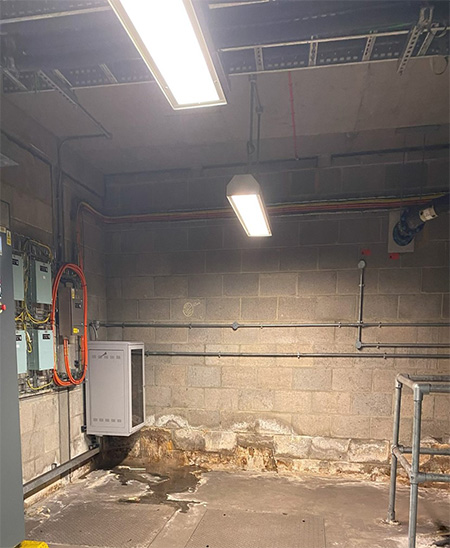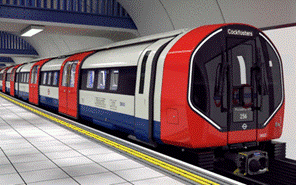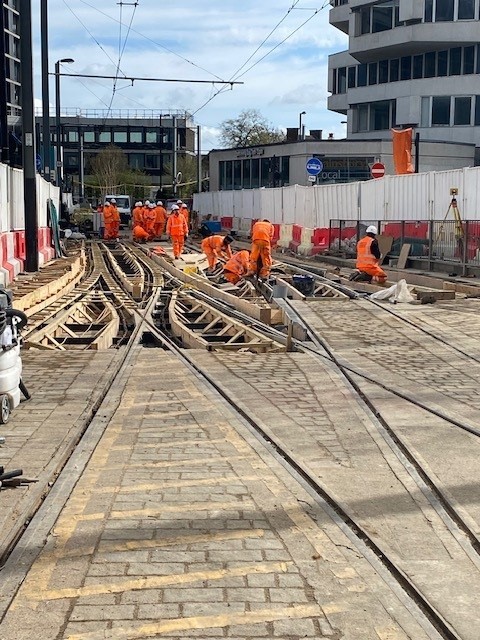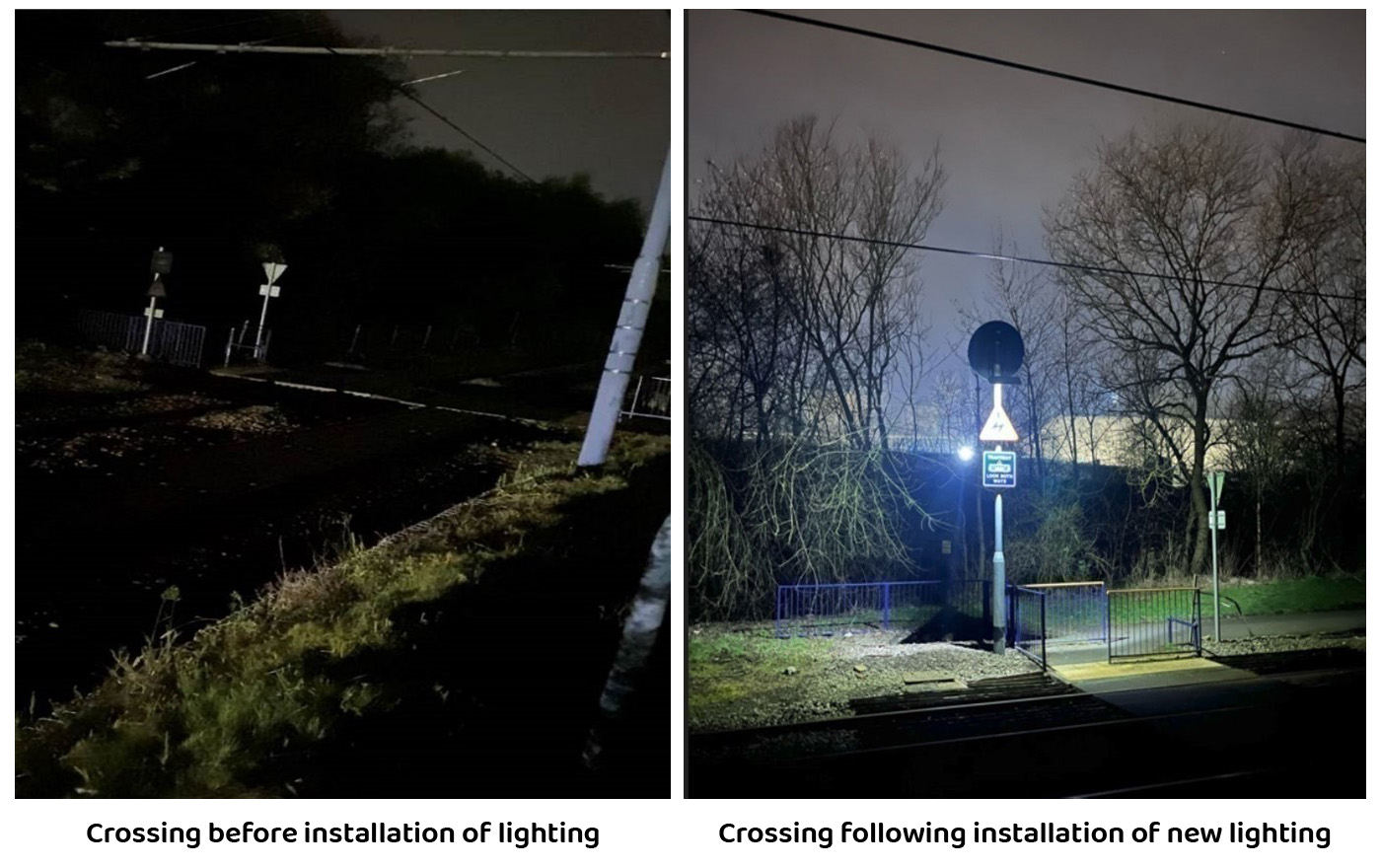Channel Tunnel
In 2024, the Channel Tunnel marked its 30th anniversary of operations. This milestone reinforces the need for both the concessionaires and international operators to maintain effective systems for managing the health and safety risks associated with ageing rolling stock and infrastructure.
Recent incidents continue to underline the importance of thorough risk assessments, which are essential for informed decision-making and the implementation of effective risk controls.
Regulatory oversight
The Intergovernmental Commission (IGC) remains the safety regulator for the UK half of the Channel Tunnel, with the Channel Tunnel Safety Authority (CTSA) providing expert advice and support on all safety matters relating to tunnel operations.
As bi-national entities, both the IGC and CTSA include representatives from the British and French transport ministries, regulators, and emergency services. We act as the secretariat for both bodies and provide all UK representatives on the CTSA.
Over the reporting period, CTSA activities included:
- Inspection of Eurotunnel’s arrangements for managing the competence of engineering train drivers.
- Ongoing collaboration with Eurotunnel to address wheel-rail interface issues and derailment risks. This work followed freight shuttle derailments in 2022 and 2023 involving the loss of critical suspension components. Through detailed technical analysis, Eurotunnel has improved its understanding of track and rolling stock behaviour and contributing factors to derailment.
- Inspection of the UK First Line of Response (FLOR) service, including oversight during the transition from a public fire and rescue provider to a private contractor.
- Continued engagement with potential new international operators and rolling stock manufacturers regarding the safety regulatory requirements for operating passenger services through the Channel Tunnel.
We also enhanced our approach to intervention planning through the introduction of a dedicated risk-profiling process. This will enable more targeted and proportionate inspections based on risk priority.
ElecLink
In September 2024, an incident involving the ElecLink interconnector - linking the UK and French national power networks – occurred near the French portal. Displacement of cable supports led to contact between the positive cable and a fixing bracket, triggering the system’s protection arrangements to de-energise the cable. Further faults were discovered during subsequent repair work, delaying the interconnector’s return to service until February 2025.
CTSA inspectors supported investigations into the root cause and reviewed ElecLink’s inspection and monitoring processes. A more detailed follow-up inspection is planned for 2025 to 2026.
Health and safety by design
In 2024 to 2025, we continued to promote the early integration of health and safety considerations in major rail infrastructure projects and proposals. This included supporting wider workstreams aligned with the Government’s rail reform agenda, particularly efforts to embed health and safety principles within plans for Great British Railways.
Our early-stage engagement with projects such as High Speed 2 (HS2) and East West Rail enables us to influence key safety design decisions when they can be addressed most effectively and efficiently. This work has been especially relevant in the context of HS2’s reset and project challenges during the year.
We also remained active participants in the Department for Transport’s joint Safety Working Group and the Rail Transformation Programme, working alongside the Rail Safety and Standards Board (RSSB) and other stakeholders. Our focus is to ensure that the rail industry’s structural changes – including the move of train companies into public ownership – are subject to rigorous safety scrutiny and independent oversight.

Transport for London (TfL)
We maintained constructive and collaborative engagement with Transport for London (TfL) through regular liaison and regulatory scrutiny. Our assessment of TfL’s safety management maturity found that performance varied across the organisation: some areas reached the ‘managed’ maturity level, while others showed signs of becoming ‘standardised’ and ‘predictable’, indicating further scope for consistency and improvement.
Our regulatory engagement with Arriva Rail London, in its role as station facility owner, revealed similar levels of management maturity.
London Underground Limited
Assets
Following inspections in 2023 to 2024, we continued our focus on maintenance practices concerning ageing building infrastructure – particularly related to water ingress. Our findings revealed areas where risk management could be strengthened. We have sought and received assurances from LUL regarding remedial action. This work will continue into 2025 to 2026.

Platform Train Interface (PTI)
We remain concerned about platform-train interface risks, including ‘trap and drag’ incidents and falls onto the track. We continue to press TfL to enhance risk controls, including improvements to door-edge obstacle detection and the deployment of person-on-track detection technologies. This remains a priority area for regulatory attention.

Docklands Light Railway (DLR)
DLR operations saw significant developments in 2024 to 2025 with the appointment of a new franchisee and the introduction of new rolling stock. Software integration and testing of the new vehicles is ongoing, with two trains currently under trial. The existing fleet is operating at reduced capacity until full rollout.
Construction of a new depot is in progress, and trials of camera-based track intrusion detection technology are underway. A revised risk model is also being developed to support these operational changes.
Case Study 3: 4 Lines Modernisation (4LM)
The Four Lines Modernisation (4LM) Programme is the largest upgrade in the history of the London Underground’s sub-surface railway, covering the Circle, District, Hammersmith and City, and Metropolitan lines. This ambitious programme aims to modernise the network by introducing new trains, updated track infrastructure, and a cutting-edge Communications Based Train Control (CBTC) signalling system. The upgrade is designed to significantly increase capacity and improve network reliability for millions of passengers.
The complexity of the programme arises from integrating the new CBTC system into existing legacy infrastructure while also ensuring compatibility with separate depot signalling systems. This requires simultaneous software development, comprehensive system testing, and phased signalling migration across multiple parts of the network.
We focussed on London Underground’s change management approach, specifically examining software assurance arrangements during testing and commissioning. We identified concerns around how changes were designed and implemented, which had led to numerous operational workarounds - each carrying potential risks.
By applying specialist technical expertise, we conducted detailed reviews of project documentation and assurance processes, supporting our evaluation of how LUL managed and controlled risks. From this, we recommended several key actions to strengthen their change management practices. We continue to work closely with LUL to ensure these improvements are fully embedded as the project progresses towards its most complex signalling migration phase.
London Underground have shown strong commitment to tackling the challenges of integrating the CBTC system with legacy infrastructure. They have adopted new and improved ways of working with their contractors and suppliers, enhancing oversight and embedding industry best practices in software development, testing, and assurance. Their proactive approach to managing change and learning from the process is helping to reduce risks and generate lessons that will benefit other major infrastructure programmes.
Trams and light rail
In 2024 to 2025, we focused our proactive regulatory efforts across tramway networks on two key areas:
- Medical Fitness of Safety-Critical Staff – We inspected systems for assessing and managing the medical fitness of tram drivers and other safety-critical staff. Our findings showed generally robust systems, clear role understanding, and effective medication declarations. Minor implementation gaps identified have informed targeted improvements.
- Non-Motorised User Crossings – As a known high-risk area for the public, we examined how tramways manage risk at pedestrian and cyclist crossings. Risk assessments were found to be aligned with LRSSB guidance and essential controls such as lighting and signage were generally well implemented. Improvement actions were required in some cases, and we ensured that appropriate corrective plans were in place.
Our RM3 assessments indicate that safety management maturity in the sector remains within the ‘standardised’ range, with noticeable progress in risk assessment practices.

We maintained strong strategic collaboration with the Light Rail Safety and Standards Board (LRSSB), helping to sustain the sector’s positive momentum. Heritage tramways were also subject to proportionate inspections which provided assurance that significant risks are being effectively managed.
Case Study 4: Non-Motorised User Crossings
During our inspections of Non-Motorised User Crossings across modern tramways, we identified several examples of good practice. However, there were also areas that required intervention and improvement. One such instance was observed on the West Midlands Metro network, particularly in areas outside the city centre where trams operate at higher speeds. At several points along the route, NMU crossings provide safer designated points for the public to cross tram tracks.
During site visits, we noted that a number of these crossings had insufficient lighting. This posed a safety concern - not only did it make it harder for pedestrians to see and navigate the crossings, but it also limited the ability of tram drivers to spot crossing users in time. The lack of lighting was primarily due to the challenges of supplying power to remote locations and concerns that bright lights could impair tram drivers’ visibility.
In response to our findings, West Midlands Metro acted swiftly. They sourced and installed an innovative and cost-effective solar-powered lighting solution that could be deployed without the need for traditional power infrastructure. This innovation was trialled and implemented in a short timeframe, significantly improving visibility at the affected crossings. As a result, the safety of both crossing users and tram operators has been enhanced, with reduced risks of collision or slip/trip incidents.
The prompt and proactive response from West Midlands Metro reflects a strong commitment to continually raising health and safety standards across the sector. This case provides a positive example of how collaborative oversight and industry engagement can lead to tangible improvements for public safety.

Heritage and minor railways
The heritage and minor rail sector continue to demonstrate a “managed” level of safety maturity based on RM3 assessments. A significant development this year was the publication of the first safety standard by the Heritage Safety and Standards Board, marking a step towards more “standardised” risk management across the sector.
Key Activities
We conducted inspections focused on:
- Use of Road Rail Vehicles (RRVs) – Most railways demonstrated awareness of key risks and control measures. However, common areas for improvement included banks-person competence, lift planning, and visual aid maintenance.
- Asbestos Management (see case study below).
General inspections showed improved performance, particularly in incident investigation quality. However, managing change safely remains the weakest area. We did observe increasing evidence of maturity, with four railways assessed at the ‘predictable’ level.
We issued two Improvement Notices related to shunting operations and equipment maintenance and concluded a prosecution following a fall from height incident.
Sector challenges
A number of incidents linked to extreme weather – such as landslips, storm damage, and fallen trees – highlight the growing need for resilience planning in the face of climate change.
We continue to support the development of the Heritage Railway Safety and Standards Board. While progress has been slower than desired, the publication of a level crossing risk management standard is a positive step forward with further standards expected.
We also delivered a nationwide series of workshops in partnership with the Heritage Railway Association, attended by approximately 100 duty holders.
Case Study 5: Asbestos management
Heritage and minor railways frequently operate with assets containing asbestos, including locomotives, carriages, and historic buildings. Effective management of asbestos is critical to protect the health and safety of staff, volunteers, contractors, and visitors. This is especially important in the heritage sector, where ongoing maintenance and restoration work involves ageing infrastructure.
In 2024 to 2025, we proactively engaged with the heritage railway sector to clarify our expectations for asbestos management. Following this communication, our Heritage team, supported by occupational health specialists, conducted a targeted series of inspections at selected duty holders to assess asbestos risk management practices.
The inspections revealed significant variability in the effectiveness of asbestos management. Some railways demonstrated robust and well-documented systems for maintaining asbestos records, reflecting strong governance and risk control. While no immediate significant risks were identified, other railways exhibited weaker processes, prompting us to provide tailored advice on improving written procedures and record-keeping.
Key findings highlighted the importance of clearly defining responsibility for asbestos management within organisations and ensuring internal capabilities are well understood. Additionally, the inspections identified a general lack of awareness regarding asbestos risks concealed within buildings.
Following these inspections, we shared findings with the wider heritage railway community, enabling all duty holders to review and enhance their asbestos management strategies, thereby safeguarding health and safety across the sector.

